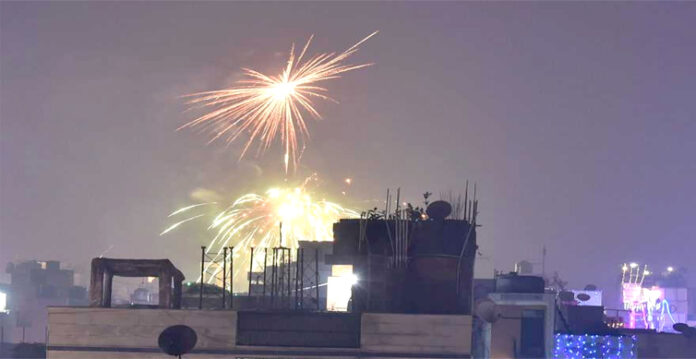In recent years, the air quality in Hyderabad has experienced a significant decline, fluctuating between moderate and poor categories. With the city’s Air Quality Index (AQI) currently measuring 12.9 times above the World Health Organization’s (WHO) annual air quality guideline value, concerns are mounting over the potential for a public health crisis similar to that faced by Delhi, where AQI levels are reported to be 65 times higher than recommended.
Experts warn that immediate action is needed from the local administration to prevent Hyderabad from falling further into this environmental crisis. Presently, the AQI indicates a troubling status, with recent readings showing levels of 159 near the US Consulate, 134 in Sanathnagar, and 131 at ICRISAT-Patancheru. The Bollaram Industrial Area and IDA Jeedimetla also recorded unsatisfactory air quality figures.
The primary culprits behind this deterioration include congested roads that contribute to dust accumulation and vehicle exhaust, which accounts for approximately 30% of particulate pollution. Diesel vehicles pose a significant threat, exacerbating the air quality issues. Additionally, road dust is identified as a major contributor, representing 30-45% of particulate pollution.
Also Read: Hyderabad Air Quality Plummets to Hazardous Levels on Deepavali Night
While stubble burning in neighboring states like Punjab and Haryana has been blamed for high pollution levels in Delhi, Hyderabad faces its own set of challenges. Garbage burning in residential areas and landfills along roadways are critical factors that have pushed the AQI into unhealthy territory. A study by Hans India highlights the severe air quality issues in Mansoorabad and its surroundings, where residents are plagued by the burning of garbage and toxic chemical effluents from nearby industrial zones.
Residents have reported that trash burning occurs frequently in Mansoorabad, Auto Nagar, and nearby localities, especially during the night. The smoke is so dense that it remains visible in the dark, contributing to serious respiratory problems. Despite numerous complaints, neither the Pollution Control Board nor the Greater Hyderabad Municipal Corporation (GHMC) has taken meaningful action to address these issues. Consequently, Mansoorabad’s air quality has plummeted to an unhealthy AQI of 156.
Adding to the problem, the local waste management system is insufficient, with garbage collection not conducted in an organized manner. Construction debris and waste from street vendors further contribute to the deteriorating air quality. Community members are calling for a collaborative approach involving local associations, NGOs, and government officials to promote responsible waste disposal practices. Experts assert that mere slogans will not suffice; coordinated action is essential.
Environmentalist Prof. Purushotham Reddy emphasized the necessity of establishing an Environment Protection Authority in India, akin to those in several European nations and the US. Following the Bhopal gas tragedy in 1984, the Indian government enacted the Environment Protection Act in 1986, but no authority was created to enforce it effectively. Prof. Reddy argues that such an authority could provide essential oversight and accountability, as state pollution control boards have consistently failed to manage air quality issues.
As the people of Hyderabad continue to face serious air quality challenges, the need for urgent and effective measures has never been clearer. Without a collective effort to address pollution sources and improve the city’s environmental health, the future of Hyderabad’s air quality hangs in the balance.
(This story is sourced from a third-party syndicated feed. Raavi Media takes no responsibility or liability of any nature. Raavi Media management/ythisnews.com can alter or delete the content without notice for any reason.)


